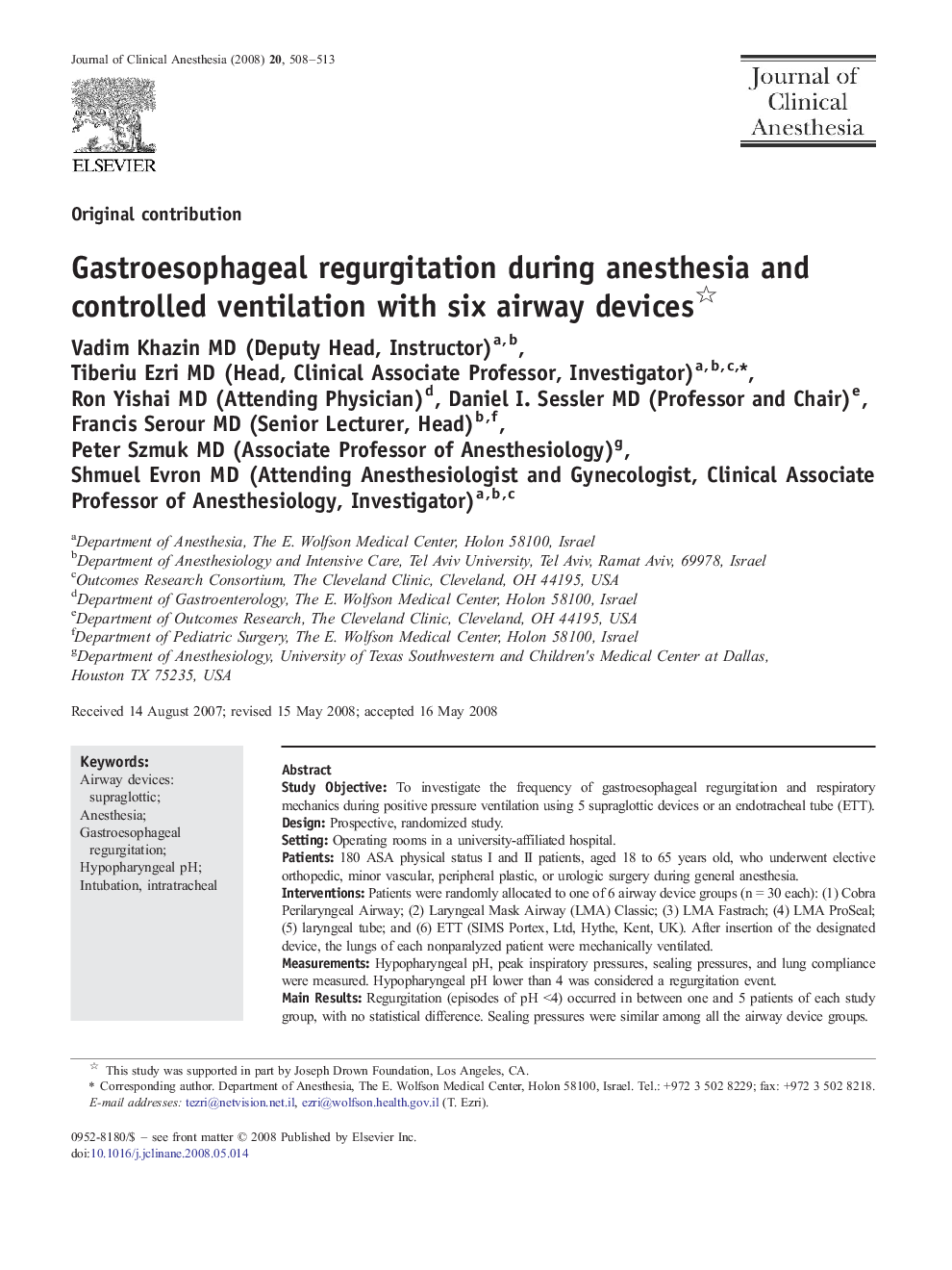| Article ID | Journal | Published Year | Pages | File Type |
|---|---|---|---|---|
| 2763659 | Journal of Clinical Anesthesia | 2008 | 6 Pages |
Study ObjectiveTo investigate the frequency of gastroesophageal regurgitation and respiratory mechanics during positive pressure ventilation using 5 supraglottic devices or an endotracheal tube (ETT).DesignProspective, randomized study.SettingOperating rooms in a university-affiliated hospital.Patients180 ASA physical status I and II patients, aged 18 to 65 years old, who underwent elective orthopedic, minor vascular, peripheral plastic, or urologic surgery during general anesthesia.InterventionsPatients were randomly allocated to one of 6 airway device groups (n = 30 each): (1) Cobra Perilaryngeal Airway; (2) Laryngeal Mask Airway (LMA) Classic; (3) LMA Fastrach; (4) LMA ProSeal; (5) laryngeal tube; and (6) ETT (SIMS Portex, Ltd, Hythe, Kent, UK). After insertion of the designated device, the lungs of each nonparalyzed patient were mechanically ventilated.MeasurementsHypopharyngeal pH, peak inspiratory pressures, sealing pressures, and lung compliance were measured. Hypopharyngeal pH lower than 4 was considered a regurgitation event.Main ResultsRegurgitation (episodes of pH <4) occurred in between one and 5 patients of each study group, with no statistical difference. Sealing pressures were similar among all the airway device groups.ConclusionsThe frequency of gastroesophageal regurgitation in anesthetized, unparalyzed, mechanically ventilated patients was similar in patients whose lungs were ventilated with either the Cobra Perilaryngeal Airway, LMA Classic, Fastrach, ProSeal, laryngeal tube, or ETT.
